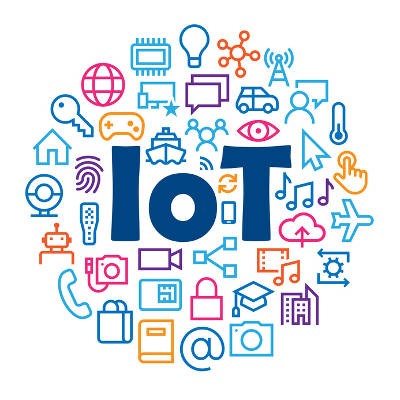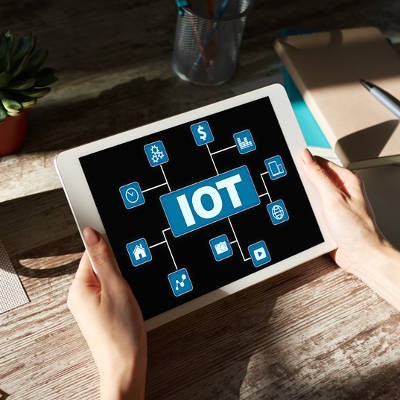The big game was this past Sunday, and if you are like millions of other people, you tuned in to see the spectacle of the game, the halftime show, and Taylor Swift. Behind the scenes, the National Football League has been utilizing emerging technologies to help them solve some of their biggest problems. Let’s go into three ways the NFL is using technology to improve their product.
k_Street Consulting, LLC Blog
Technology has the power to hold businesses back when it’s not implemented correctly, but it also presents an opportunity to overcome challenges facing modern businesses. There are several interesting technologies that might seem strange at first for business purposes, but we suspect that they could bring significant value to the table for workers, customers, and your organization. Let’s look at these three technologies and how they might make significant contributions to your business’ continued success.
Businesses have been starting to embrace the Internet of Things (IoT) for quite some time now as they can see the benefit of using devices to streamline parts of their business processes that may not be actively engaging. There is another growing trend in the space that is more sophisticated and could be one of the most transformative technologies in the near future, this is the Industrial Internet of Things (IIoT). This month, we discuss what the IIoT is and how it can be used by certain companies to massive benefit.
We often mention the Internet of Things in this space because, as business technology goes, it is one of the most untapped resources that companies have presently. One of the most useful IoT tools is the RFID sensor. Today, we will explain what an RFID tag is and how it can work to improve your business.
The Internet of Things is usually a term used to describe the billions of devices that are now connected to the Internet. For a business, however, confronting an IoT strategy can be confusing. Not only do they need to consider the innovation aspect that smart devices create, they also need to prioritize the security of these devices as many of them don’t come with any cybersecurity features whatsoever.
By now you’ve probably heard the term Internet of Things (IoT). You may not completely understand what it is, but you know it has something to do with all those “smart” devices that you see popping up everywhere. Today, we’d thought we’d get into what types of things are on the IoT and how they can have an impact on your business.
With the Internet of Things taking the world by storm, it’s no surprise that many businesses are attempting to leverage it to their advantage. However, implementing these devices into your operations comes with its fair share of risks and challenges. Let’s discuss some of the ways you should consider implementing the Internet of Things for your business, as well as what you must consider when building your IoT strategy.
The Internet of Things is growing rapidly and can be of benefit to your organization if it is deployed correctly. It offers a massive opportunity to automate certain parts of your business, saving money, and ensuring that human error is taken out of the equation. A majority of businesses have not fully taken advantage of the time and money savings a well-positioned IoT device can provide. Let’s take a look at three of the most useful IoT devices that a small business can implement.
For a couple years leading up to 2020, the Internet of Things was all the rage, but for obvious reasons, IoT hasn’t been at the top of many IT administrator’s minds unless it was in an effort to secure file access for the endpoints of a newly remote workforce. Despite the questions surrounding revenue and budgets, IoT can bring a lot of value to the small business. Let’s take a look at today’s IoT and talk about a few options that you can use for yours.
The Internet of Things is growing rapidly, and with that growth there will be a stage where thoughts about IoT technology change forever. From RFID sensors to mobile devices to commercial goods, machine-to-machine communications have already made their way into people’s homes and businesses. What can we expect to happen with the IoT in the future? Today, we take a look to answer this very question.
Twenty years ago, the term “Internet of Things” was coined by a marketer named Kevin Ashton. Working for multinational consumer goods corporation Proctor & Gamble, his idea to use RFID to help manage P&G’s supply chain led to a partnership with MIT. For his efforts, Ashton became a high-tech entrepreneur and best-selling author, but his lasting legacy will likely be tied to the actual Internet of Things (IoT).
The Internet of Things is a phenomenon that must be accounted for, as the sheer number of devices accessing networks means that security is always a concern. How can your organization be sure that the Internet of Things doesn’t create problems? It all starts by being aware of how your organization’s network infrastructure operates in relation to the Internet of Things.
Just like plenty of other industries all over the world, the manufacturing industry is beginning to take advantage of new IT solutions. Manufacturers can benefit considerably from implementing new and improved technology, including solutions connecting the Internet of Things, Asset Management, and Big Data analytics to their current IT approach.
At first glance, the Internet of Things is confusing, but now that we’ve been seeing “smart” devices hit the market for some time, there are understandably a few very serious issues that come with so many devices being able to be accessed from the Internet. The utilization of “smart” devices carries value. Here we have machines that do a lot of the heavy lifting for us in our lives, and with the ability to remotely control them, they only become that much more valuable.
Smartwatches might be great tools for keeping yourself connected to important information, but they bring with them a considerable amount of security threats. Vulnerabilities can make using smartwatches and other wearable technology dangerous. We’ll examine some of the major features of the modern smartwatch, how hackers can use them to cause trouble, and what you can do about it.
Ah, the holidays; they are a time for good food and good cheer, but also tend to be a time of gift-giving of all kinds. You might have all kinds of new gadgets running around your office that aren’t being accounted for. Some of these devices might be a security issue for your business precisely because they aren’t normally meant to connect to the Internet. These Internet of Things devices just aren’t as secure as they should be, especially in a business environment.
The Internet of Things has become one of the central parts of connectivity in a tech-centric world. Despite the incredible convenience that these devices offer to users, they come with considerable security risks that absolutely need to be kept in mind. We’re going to discuss some of the ways you can keep the IoT from being a security hazard while optimizing how much you get out of it.
You might be surprised to hear how the scope of the Internet of Things has increased over the past few years. These connected devices are all over the place. In order to ensure that your business isn’t affected in a negative way by these IoT devices, you’ll need to consider the many risks and how you will respond to them.
Smart technology has seen explosive growth in recent years, leading to an uptick in startups popping up to capitalize on smart tech and the innovative ways it can be leveraged. With demand for such devices increasing exponentially, it’s little wonder that many industries are diving into this technology. Today, we’ll discuss three of them.
Smart technology and the whole Internet of Things revolution has been underway now for some time. One vertical market that has embraced this shift was that of sports and fitness. Of course, you’ve heard of (and possibly own) a fitness band that is designed to track your steps, your vitals, and some other things to allow you to be the best version of yourself. This technology has been around for years and, while useful, isn’t transforming the face of sports like the technology you are seeing being introduced today. Today, we’ll take a look at how the IoT is transforming the sporting world.
At this point, the concept of the Internet of Things is a fairly familiar one, but that familiarity is to the Internet of Things on the micro scale--appliances with capabilities enhanced by an available connection to the Internet. There is another, more macro application to the Internet of Things: as a way to collect data in a municipal setting. However, like the IoT we are familiar with, these “smart cities” are host to many familiar problems.
The Internet of Things is constantly changing and evolving, but this also means that it might be growing a bit too fast for its own good. So many devices these days have connectivity that it’s difficult to keep your business secure from them. We’ll discuss whether or not the Internet of Things is outpacing the efforts of security organizations and businesses, as well as what you can do to make sure that your business doesn’t fall victim to it.
More devices are taking advantage of Internet connectivity now than ever before, including some that have no business having a connection to the Internet whatsoever. While there are some practical uses for connective technology on devices on security systems, thermostats, and vehicles, others simply can’t be justified. Even blenders and refrigerators have access to wireless communication nowadays. These types of connected devices are part of the reason why so many businesses are worried about the Internet of Things.
So many devices have entered the workplace that it’s mind-boggling to think about how they will affect operations and security. However, it’s crucial to know how this will affect your business in the future. These connected “Internet of Things” devices could have a major impact on how you run your business in 2018, so take a moment to see what the experts at HAX Hardware Trends have to say about it:
Small and medium-sized business owners are finding that it’s getting more difficult to compete without the means to deploy the newest technologies. Larger organizations are finding greater market shares, but smaller businesses have some advantages, namely in terms of maneuverability. With the help of some external resources, SMBs can be operate as effectively as larger organizations.
 With approximately 5.5 million new devices being connected to the Internet everyday, the Internet of Things presents the biggest security challenge to date for IT professionals. Essentially, an IoT device that’s not secured can easily fall prey to hackers, and with so many different devices being connected, it’s easy to overlook a device or two, like your security cameras.
With approximately 5.5 million new devices being connected to the Internet everyday, the Internet of Things presents the biggest security challenge to date for IT professionals. Essentially, an IoT device that’s not secured can easily fall prey to hackers, and with so many different devices being connected, it’s easy to overlook a device or two, like your security cameras.


























